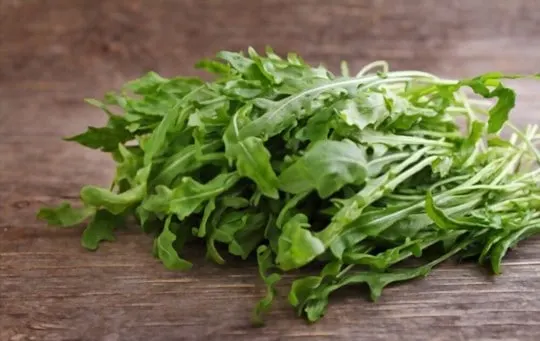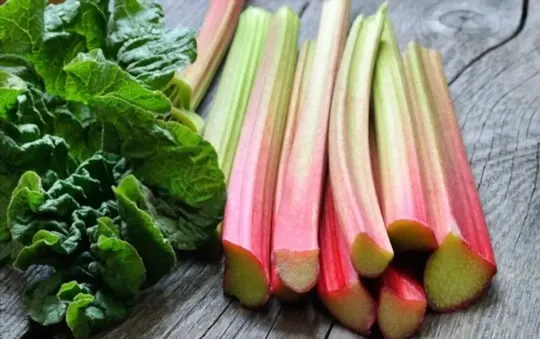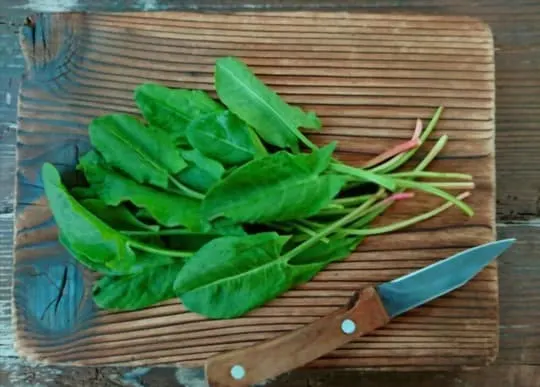Sorrel’s unique tangy flavor is a game-changer in many dishes.
Sometimes, we run into a snag because it’s nowhere to be found in our kitchens.
Finding the perfect stand-in for this leafy green can seem like a culinary quest.
We’ve all been there, staring into the fridge, hoping for sorrel to magically appear.
No sorrel? No problem.
We’ve got some ace alternatives that’ll do the trick, keeping your meals exciting.
Spinach, arugula, and lemon zest aren’t just placeholders; they’re flavor powerhouses.
Each brings its own zing to the table, perfectly mimicking sorrel’s signature bite.
Trust us, your dishes will miss nothing, and you might discover some new favorite flavors along the way.
What is Sorrel?

Sorrel is a tart and tangy herb that is often used in salads and soups.
The leaves have a lemon-like flavor and a slightly acidic taste.
Sorrel is also known for its astringent properties, which can help to tighten the skin and reduce inflammation.
The texture of sorrel leaves is similar to spinach, but they are much more delicate and easily bruised.
When shopping for sorrel, look for fresh leaves that are bright green in color and free from brown spots or wilting.
The herb can be stored in the refrigerator for up to two days, but it is best used as soon as possible after picking.
When cooked, sorrel breaks down quickly and loses its bright green color.
For this reason, it is often added at the end of cooking or before serving.
When used in salads, sorrel pairs well with other sharp flavors like vinegar or mustard.
The herb can also be used to make a refreshing drink by adding it to water or iced tea.
So next time you want something new to add to your plate, reach for some sorrel and enjoy its unique flavor.
The 3 Best Substitutes for Sorrel
For those who don’t have access to fresh sorrel or find the flavor a bit too tart for their taste, there are several excellent substitutes that can be used in its place.
Here are three of the best:
1 – Arugula

Arugula is a leafy green vegetable that belongs to the Cruciferous family of plants, which also includes broccoli and cabbage.
It is characterized by its small, pointed leaves, which have a slightly peppery taste.
The flavor of arugula can vary depending on the variety and growing conditions, but it is typically milder than other greens, such as mustard greens or turnip greens.
When eaten raw, arugula has a slightly bitter flavor that some people find pleasantly sharp.
It can also be cooked, which mellows the flavor and makes it more palatable for some people.
Arugula is often used in salads, but it can also be cooked and served as a side dish or used as a garnish.
The leaves of arugula are delicate and should be handled with care to avoid damaging them.
When purchasing arugula, look for fresh, crisp leaves free from brown spots or wilting.
Arugula is best used within a few days of purchase.
Store it in a plastic bag or container lined with paper towels to absorb excess moisture in the refrigerator.
2 – Mustard Greens

Mustard greens are a leafy green vegetable with a slightly sharp, peppery flavor.
They can be enjoyed cooked or raw, and their tender yet crunchy texture makes them a versatile addition to any dish.
Mustard greens are an excellent source of vitamins A, C, and K, as well as a good source of fiber and antioxidants.
When shopping for mustard greens, look for leaves that are deep green in color and free from blemishes.
Avoid any leaves that look yellowed or wilted.
To enjoy them at their best, simply wash the leaves and chop them into bite-size pieces.
Add them to salads, soups, or stir-fries, or enjoy them on their own as a healthy side dish.
Mustard greens can be stored in the refrigerator for up to four days.
3 – Rhubarb

Most people are familiar with rhubarb as a pie filling, but this vibrant pink vegetable is quite versatile.
While it can be used in sweet dishes like pies and jams, it is also often used in savory sauces and chutneys.
Regarding flavor, rhubarb is tart and tangy, with a slightly earthy taste.
The texture of cooked rhubarb varies depending on how it is prepared.
When stewed, it becomes soft and almost mushy, while retaininthankg a slight crunch when roasted or grilled.
However you enjoy it, rhubarb is a delicious way to add some brightness to your plate.
Hence, it makes a great substitute for sorrel.
Conclusion
In conclusion, the three best substitutes for sorrel are arugula, mustard greens, and rhubarb.
Each leafy greens can provide a sour flavor similar to sorrel while offering other nutritional benefits.
When choosing a substitute for sorrel, it is important to consider what other flavors will be present in the dish and the overall texture.
So, the next time you’re in the kitchen and find yourself without sorrel, don’t worry.
These three substitutes will have you covered.
Thanks for reading.

The 3 Best Substitutes for Sorrel
Ingredients
- Arugula
- Mustard Greens
- Rhubarb
Instructions
- Pick your favorite substitute from the list above.
- Follow cooking directions for your selected substitute with the proper ratio of ingredients.

Andrew Gray is a seasoned food writer and blogger with a wealth of experience in the restaurant and catering industries. With a passion for all things delicious, Andrew has honed his culinary expertise through his work as a personal chef and caterer.
His love for food led him to venture into food writing, where he has contributed to various online publications, sharing his knowledge and insights on the culinary world. As the proud owner of AmericasRestaurant.com, Andrew covers a wide range of topics, including recipes, restaurant reviews, product recommendations, and culinary tips.
Through his website, he aims to inspire and educate fellow food enthusiasts, offering a comprehensive resource for all things food-related.

Leave a comment